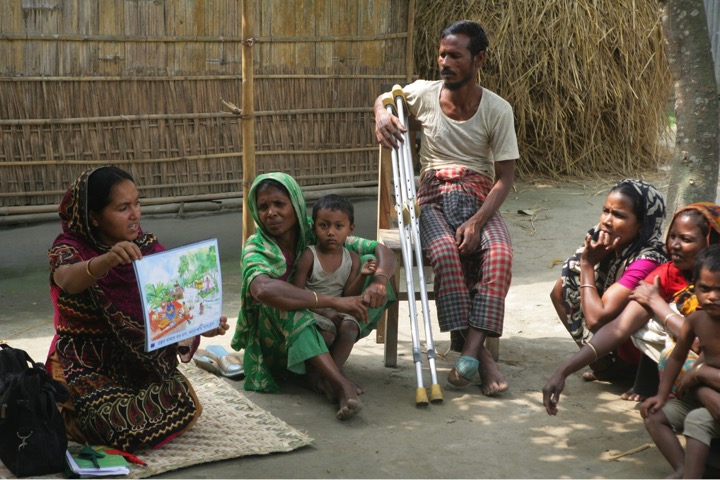Communication

Means of communication need to be adapted so that entire communities, including persons with disabilities can receive, understand and act upon important information.
Always remember to use positive language on disability when making campaigns, providing information, in meetings, when making advertisement, or designing promotional materials.
Tips on inclusive communication:
Special arrangements depending on the type of difficulty people face:
- Providing sign language interpretation or communicating using pen and paper;
- When communicating with persons with a mental health condition or in distress, be mindful of body language, communicate clearly but softly. Use an un-threatening tone and volume and actively listen, as the person could be experiencing trauma and related symptoms;
- Read out written material for people with difficulties reading or who are blind;
- Use images and drawings to complement information.
Inclusive meetings, focus group discussions and questionnaires:
- Make sure that persons with different types of disabilities, women and men, are represented and can access the venue where the event takes place;
- Use a variety of communication tools during information meetings, which will add to the understanding of the message: drawing, pictures, gestures, theater or role plays;
- This includes special arrangements for questionnaires to persons with disabilities (see information).
Specific communication attentions in case of a disaster:
- Inform persons with disabilities who cannot leave their homes via home visits, using trained volunteers, including persons with disabilities, or coordinate with Disabled People’s Organisations or other Community Based Organisations;
- If using a megaphone or loudspeaker, be aware that not everyone will hear or understand the message. Use short and clear messages, for example: "EVACUATION! Go out the rear door on your right. NOW. Meet outside on the front lawn";
- Take advantage of a good communication with persons with disabilities during home visits and information meetings, to ask them about the obstacles they may face in accessing relief and their suggestions for improvement. Bring a list with disability specific organisations or disability focal points that you can share with persons with disabilities and their families;
- A disability focal point, which serves as an information, meeting and referral point, could be set-up in temporary settlements, camps or collective centres, with designated staff or volunteers. The focal point would make the link between people and specific services required, such as assistive devices, rehabilitation or mental health and psychosocial support (MHPSS) for example, and could also address other groups at risk, such as older people (age and disability focal points).